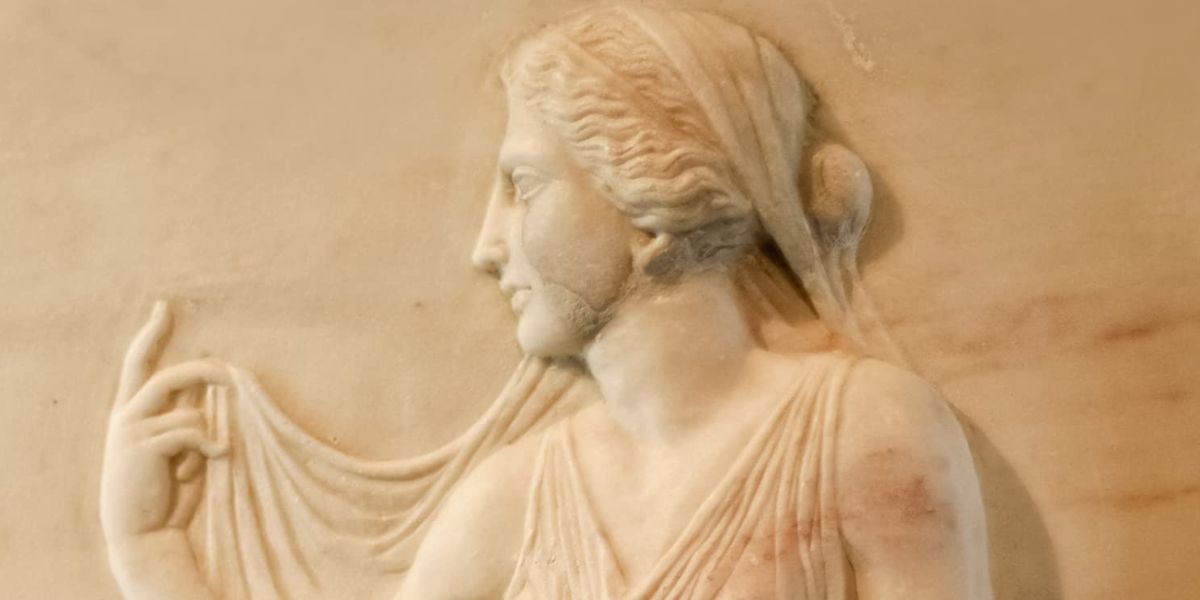
Pagan Portals – The Temple Priestesses of Antiquity, by Lady Haight-Ashton
Moon Books, 128 pages, 1803410280, August 2022
I think it’s very common for modern witches and priestesses to feel a connection to our predecessors, at least this is true for me. Reading about the lives of priestesses, oracles, and healers of the past builds a bridge between past and present, reminding me of the timelessness of the Goddess. Pagan Portals – The Temple Priestesses of Antiquity by Lady Haight-Aston was a very interesting read that took me through the cultures of priestess traditions dating back to 12,000 B.C.E. in Mesopotamia all the way to the present age.
“Whether Oracles, Seers, Psychics, and Sibyls, or Sacred Dancers and Healers, the ancient Temple Priestesses wove a narrative of both realism and mythology. They held court in every ancient civilization with their mysterious and mystical powers. These empowered women enthralled those who sought their advice while always serving the Goddess they revered.”1
Lady Haight-Aston’s resume is quite impressive. She is a Third Degree High Priestess of both Gardnerian and Cabot Hermetic Tradition, as well as High Priestess of Sacred Moon Coven and the Iseum of the Graceful Goddess. She is also a professional psychic, trance medium, Sacred Dancer, teacher, and tarot reader. In 2019, Lady Haight-Aston published Pagan Portals – The First Sisters: Lilith and Eve. The vastness of her knowledge of different traditions and forms of Goddess worship shine through every page of this book.
The most prominent priestess cultures covered in this book are those of ancient Egypt, Greece, and Rome, including Goddess cults of Isis and Hathor, the Oracle of Delphi, and the Vestal Virgins. But I was surprised to learn about other traditions that I had previously not heard of before, such as The Ank Priestesses of the Isle of Iona and the Cumaean Sibyl that presided over the Oracle of the Dead in Baia, Italy.
I will admit each section is short; this isn’t a full deep dive into any one priestess tradition, but rather a small sample of each one. But there is still plenty to learn from this book, and I found it valuable to read about all the different priestess cultures side by side. I noticed similarities and differences stand out more than when I study one priestess culture on its own. And as someone who has studied different priestess cultures previously, devouring any piece of literature I could get my hands on, Lady Haight-Aston still provided me with plenty of new revelations.
As she weaves her way through periods of the past, Lady Haight-Aston notes different speculations of academics and clearly informs readers where there is a lack of archeological evidence to make assured claims. But simultaneously, she adds her own perspective as an initiated priestess to share missing links of herstory. I deeply appreciated her point of view and am always glad for a feminist version of history, but for those who this might not be appealing, there is ample reference sources provided at the end of each chapter for readers to investigate themselves and draw their own conclusions.
I mean, if we’re being honest, priestess cultures have hardly been given the academic recognition they deserve, especially in comparison to the study of different priesthoods. To this day, putting together the pieces to better understand these cultures is still quite a challenge. As much as I value the efforts of historians and anthropologists, I feel there is value in having a modern-day Priestess share her thoughts on the significant findings too, providing an experiential interpretation of the artifacts and records.
One of my favorite chapters was “The Modern-Day Oracle Priestess” where Lady Haight-Ashton discussed prominent women that have helped to keep the Priestess tradition alive in recent times, such as Helena Petrovna Blavatsky and Sybil Leek. In this section, Lady Haight-Ashton also shares more about friends of hers that have created different communities. I was thrilled to learn about these, especially Woolston-Steene Theological Seminary (the only degree program in the United States for Wiccan ministry) and the Aquarian Tabernacle Church International.
All in all, Pagan Portals – Temple Priestesses of Antiquity was a fantastic read that expanded my knowledge of the influence Priestesses had on cultures of the past. Lady Haight-Aston’s personal path of Priestesshood helps to shine light on what the experience of these devout women of the past might have been within the context of their unique cultures. This book serves as a reminder of the spiritual and political influence women have had through time, and it inspires hope that the way of the Goddess will someday thrive again. For those interested in the pathway of the Priestess, Lady Haight-Aston provides many resources to explore as one finds their own path towards serving the Goddess in the modern world.
Alanna Kali is an astrologer, numerologist, and pioneer spirit that loves to explore life through the lens of depth psychology. She has a passion for studying the humanities and social trends. Her academic work is centered upon reuniting body, mind, and spirit through eco-psychology. She loves reading, spending time in nature, and travel.
